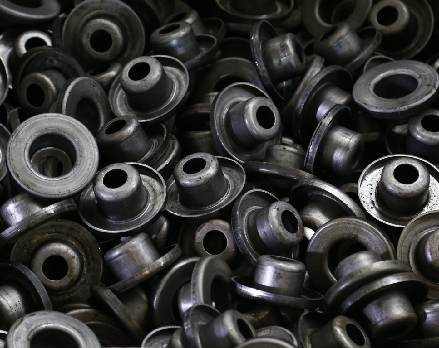 Afrikaans
Afrikaans  Albanian
Albanian  Amharic
Amharic  Arabic
Arabic  Armenian
Armenian  Azerbaijani
Azerbaijani  Basque
Basque  Belarusian
Belarusian  Bengali
Bengali  Bosnian
Bosnian  Bulgarian
Bulgarian  Catalan
Catalan  Cebuano
Cebuano  Corsican
Corsican  Croatian
Croatian  Czech
Czech  Danish
Danish  Dutch
Dutch  English
English  Esperanto
Esperanto  Estonian
Estonian  Finnish
Finnish  French
French  Frisian
Frisian  Galician
Galician  Georgian
Georgian  German
German  Greek
Greek  Gujarati
Gujarati  Haitian Creole
Haitian Creole  hausa
hausa  hawaiian
hawaiian  Hebrew
Hebrew  Hindi
Hindi  Miao
Miao  Hungarian
Hungarian  Icelandic
Icelandic  igbo
igbo  Indonesian
Indonesian  irish
irish  Italian
Italian  Japanese
Japanese  Javanese
Javanese  Kannada
Kannada  kazakh
kazakh  Khmer
Khmer  Rwandese
Rwandese  Korean
Korean  Kurdish
Kurdish  Kyrgyz
Kyrgyz  Lao
Lao  Latin
Latin  Latvian
Latvian  Lithuanian
Lithuanian  Luxembourgish
Luxembourgish  Macedonian
Macedonian  Malgashi
Malgashi  Malay
Malay  Malayalam
Malayalam  Maltese
Maltese  Maori
Maori  Marathi
Marathi  Mongolian
Mongolian  Myanmar
Myanmar  Nepali
Nepali  Norwegian
Norwegian  Norwegian
Norwegian  Occitan
Occitan  Pashto
Pashto  Persian
Persian  Polish
Polish  Portuguese
Portuguese  Punjabi
Punjabi  Romanian
Romanian  Russian
Russian  Samoan
Samoan  Scottish Gaelic
Scottish Gaelic  Serbian
Serbian  Sesotho
Sesotho  Shona
Shona  Sindhi
Sindhi  Sinhala
Sinhala  Slovak
Slovak  Slovenian
Slovenian  Somali
Somali  Spanish
Spanish  Sundanese
Sundanese  Swahili
Swahili  Swedish
Swedish  Tagalog
Tagalog  Tajik
Tajik  Tamil
Tamil  Tatar
Tatar  Telugu
Telugu  Thai
Thai  Turkish
Turkish  Turkmen
Turkmen  Ukrainian
Ukrainian  Urdu
Urdu  Uighur
Uighur  Uzbek
Uzbek  Vietnamese
Vietnamese  Welsh
Welsh  Bantu
Bantu  Yiddish
Yiddish  Yoruba
Yoruba  Zulu
Zulu Innovative Solutions for Self-Cleaning Tail Pulleys in Conveyor Systems and Equipment Maintenance
The Evolution and Benefits of Self-Cleaning Tail Pulleys
In the world of material handling, efficiency and reliability are paramount. One of the critical components in conveyor systems is the tail pulley, situated at the tail end of the conveyor belt. Traditional tail pulleys often face a common issue material buildup and spillage. To combat this, the design and technology behind self-cleaning tail pulleys have emerged as a pioneering solution, enhancing operational efficiency and reducing maintenance costs.
Understanding Tail Pulleys
Tail pulleys play a crucial role in the functioning of conveyor systems. They are responsible for providing a tensioning point for the conveyor belt, facilitating smooth movement of materials. However, they are also prone to material accumulation, particularly in environments where bulk materials are handled. This accumulation can lead to various problems, including reduced conveyor performance, increased wear and tear, and unsafe working conditions.
The Problem of Material Buildup
As materials pass over the tail pulley, they can become trapped between the pulley and the conveyor belt. When this happens, the accumulated material can hinder the movement of the belt, causing decreased efficiency and increased energy consumption. Furthermore, excess buildup can lead to belt misalignment and premature wear, necessitating frequent repairs and replacements. In extreme cases, it can even lead to hazardous accidents within the workplace.
The Self-Cleaning Solution
The self-cleaning tail pulley addresses these issues effectively. This innovative design incorporates features that actively prevent material from accumulating. One common method involves the use of specially engineered surfaces or grooves on the pulley that effectively shed materials as the conveyor operates. Additionally, some self-cleaning tail pulleys are designed with a slight angular displacement, ensuring that any sticking material is dislodged during operation.
Another advanced solution is the integration of rotating brushes or scrapers that continuously clean the surface of the pulley. These mechanisms work in tandem with the pulley’s movement, ensuring that any loose materials are consistently removed. This functionality not only keeps the system clean but also enhances its overall performance, leading to significant operational improvements.
self cleaning tail pulley

Benefits of Self-Cleaning Tail Pulleys
1. Reduced Maintenance One of the most significant advantages of self-cleaning tail pulleys is the reduction in maintenance requirements. By minimizing material buildup, these pulleys mitigate the need for regular cleaning and servicing, allowing maintenance crews to focus on other critical tasks.
2. Enhanced Efficiency As self-cleaning pulleys ensure that the conveyor system operates smoothly, they contribute to increased overall efficiency. This improvement can result in higher throughput and productivity, ultimately benefiting the bottom line of businesses relying on conveyor systems.
3. Extended Equipment Lifespan With reduced wear and tear on the conveyor belt and pulleys, self-cleaning designs prolong the lifespan of key components. This longevity translates to cost savings over time, as companies spend less on replacement parts and repairs.
4. Improved Safety By preventing material buildup, these pulleys help maintain a safer working environment. Less spillage and debris around the conveyor system reduce the risk of slips, trips, and falls, promoting a safer workplace for employees.
5. Environmental Considerations Efficient material handling systems are also more environmentally friendly. By reducing material loss and spillage, self-cleaning tail pulleys contribute to less waste and a lower environmental impact.
Conclusion
In conclusion, the development of self-cleaning tail pulleys represents a significant advancement in conveyor technology. By effectively addressing the challenges associated with material buildup, these innovative solutions enhance efficiency, reduce maintenance costs, and contribute to safer working environments. As industries continue to seek ways to optimize their operations, the adoption of self-cleaning tail pulleys is poised to become increasingly prevalent. Embracing these advancements not only benefits individual businesses but also promotes a more sustainable and responsible approach to material handling.
-
Revolutionizing Conveyor Reliability with Advanced Rubber Lagging PulleysNewsJul.22,2025
-
Powering Precision and Durability with Expert Manufacturers of Conveyor ComponentsNewsJul.22,2025
-
Optimizing Conveyor Systems with Advanced Conveyor AccessoriesNewsJul.22,2025
-
Maximize Conveyor Efficiency with Quality Conveyor Idler PulleysNewsJul.22,2025
-
Future-Proof Your Conveyor System with High-Performance Polyurethane RollerNewsJul.22,2025
-
Driving Efficiency Forward with Quality Idlers and RollersNewsJul.22,2025





























